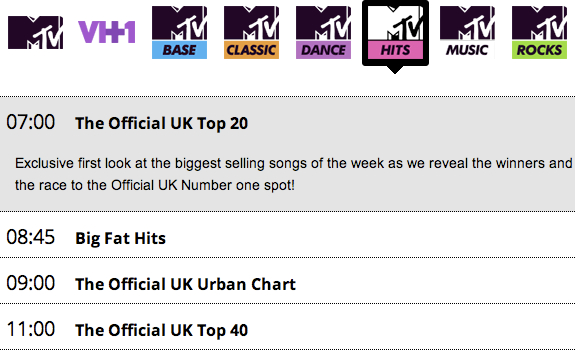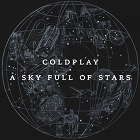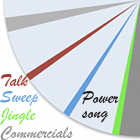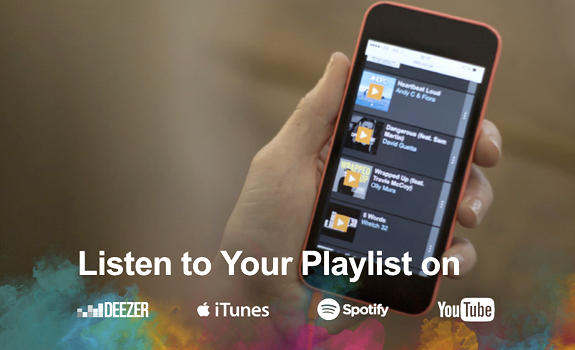Online streaming services can learn a lot from broadcast radio stations in terms of programming, music content strategist Chris Price says in an interview with us.
While Internet stations and streaming services are seen as competitors to traditional radio, mainstream-oriented broadcasters manage to stay ahead of personalization-focused challengers in many ways. Price, who’s seen all kinds of platforms and brands as an insider, would like to bring the two worlds of algorithms and people; of science and art closer together.
“Almost overnight, the channels had a distinctive identity”

Defining stations by their image, rather than (just) their content, is a different way of brand positioning (image: MTV)
Put your brand first
Music content strategist Chris Price began his career in the record business, working for labels such as Sony and Warner, and was the music programmer for BBC Radio 1 before making his move to MTV UK & Ireland in 2006. While music programming for TV and radio have a lot in common (like “the same music scheduling software, and the same principles of categorizing and rotating songs”), looking at the usage data of MTV’s several different spin-off channels made him realize that there’s an interesting shift in how media consumers think about (and listen to) music. “When I was growing up, I was an Indie and Alternative music fan; that was how I identified. By around 2008, young people’s music taste was much broader; they didn’t align themselves with one particular genre. They were using music TV more as a mood enhancer.” Hence, they decided to move from a genre-based policy to a “look-and-feel” strategy around brands.
 Know your target audience
Know your target audience
This approach meant a different way of discussion in music meetings. In radio, adding a new release to the playlist would be based on the question: does it fit the target demographic’s music preference? That meant, for example, that the latest Coldplay might end up on multiple channels, and it very often did. But in the case of a look-and-feel strategy for a family of stations, the filters were more stringent.”
Match your station image
Price explains that in this look-and-feel approach, MTV Dance wasn’t just about playing Dance music. “It was more about a sexy feeling, like when you’re going to a club. We would filter the music through the channel’s brand values.” It led to interesting discussions. While a beautifully shot Chemical Brothers video would fit MTV Dance visually, would it really fit its brand definition? It might make more sense to play this video on the alternative- and authentic-oriented MTV 2 instead – where most Coldplay songs might not fit, unless they feel more Alternative than Pop. “Almost overnight, the channels felt much more vibrant and had a distinctive identity.”
“Mainstream audiences know what they like, and like what they know”

Most people like to hear familiar songs, rather than a lot of new music, most of the time (photo: Flickr / byronv2)
Have a human touch
After radio and TV, he went online; becoming head of music for Last.fm, which was a whole different ball game. “On broadcast radio and music TV, you have one playlist. On personalized Internet radio, there is no playlist – or rather as many playlists as the number of people listening.” He was brought in during 2012, when web radio began to value human curation in combination with computer algorithms. (Broadcast radio has been doing this for decades, using music scheduling software.) During his 1-year stint, he felt like most Last.fm colleagues would describe editorial content with “a four-letter word”. Some were open to the idea that broadcast radio principles could enhance narrowcast Internet radio.
 Optimize your music flow
Optimize your music flow
Chris Price (photo) feels like, overall, online radio failed to develop the music proposition in terms of programming techniques. “The quality of its music flow is still poor, with a handful of exceptions.” Based on his experience in both traditional and new media, he’s captured several things that Internet radio could ‘steal’ from broadcast radio in an essay called Slave To The Algorithm (see Part 1 and Part 2).
Program new releases carefully
“Streaming services don’t really have a discovery problem; they have a familiarity problem.” It means that listeners of “all-you-can-eat services” like Spotify, Rdio and Deezer – who can access millions of songs – almost have no choice at all! With such an overwhelming offer, listeners need help in finding their way. But this so-called discovery problem is not the only challenge for web radio. Many streaming services focus on new music and thus lack familiarity, while broadcast radio knows how to mix new releases and current hits with recurrents and classics. “Familiarity trumps discovery at scale. Most people don’t tune in to hear music that they haven’t heard before. Especially mainstream audiences, who know what they like, and like what they know. Streaming services need to think more carefully about how to use familiarity as a secret sauce to mix in with discovery tracks.” He thinks that Pandora, iTunes Radio and Blinkbox Music are positive exceptions in this regard.
“Localization is an obstacle that Internet radio has to get past”

Some artists and bands (or individual songs) may be popular in just a certain part of the world (photo: RCA / Capitol)
Balance your music categories
Apart from a need to play the right mix of new, current, recurrent and gold songs, content matters as well. “Just as a great chef doesn’t throw all ingredients onto a plate, in broadcast radio, presentation is everything.” While most streaming services are currently nothing more than songs and adverts, traditional stations feature presenter links and station imaging. Price expects that this will change, especially at iTunes Radio, now that Apple contracted music personality Zane Lowe (who gained world fame on BBC Radio 1) in March 2015. “I can’t believe for a moment that they’re going to use Zane just as the face of their music curation. Because he’s such a powerful broadcaster, I’m pretty certain that they’re going to use him for that as well.”
 Open music segments powerfully
Open music segments powerfully
While online radio is starting to grow up, clock programming may help to structure content better. “In broadcast radio, you’d leave a commercial break with a real solid gold or a recurrent; never with a brand new track. That’s rule number 1’ in radio programming school, and yet certain streaming services are failing to cushion the effects of challenging new music with songs that are even popular on their own service. They have all of this data.”
Leverage digital user data
Yeah! That’s a huge benefit of digital media; that everything’s measurable, right? Like a live focus group or music survey?
“Exactly. Like a real-time auditorium test, with millions of respondents. Streaming services are generating masses of data, but they can be smarter about how to use data. Borrowing some ideas on how broadcast radio is using music research and bringing that to bear on its program output is something that streaming services could learn from.” Chris Price points out that most web radio channels don’t localize very well yet. “I’ve leveled the playing field across 10 major streaming services by listening to two hours of ‘Foo Fighters radio’ on each of them – from the UK, so they would know I’m a user in the United Kingdom. Most of them played a stream of US Modern Rock, like Creed, Incubus, Candlebox and Bush. It would mean absolutely nothing in the UK. Localization is an obstacle that Internet radio has to get past if it really wants to make personalized radio.”
“Broadcast radio is already doing a better job”

It seems like broadcast radio is now learning more from streaming services than the other way around (image: BBC)
Code your library well
To improve the music flow, streaming services could use what he calls property music scheduling. “It’s one of those ‘icing on the cake’ things. Some radio broadcasters make sure that every single track has the right metadata attached to it in terms of mood, tempo, texture, genre and gender. They set strict rules on genre separation or whether or not you can segue between a very thin and a very full texture. Some radio stations tie themselves in knots over these rules.” Do they make music playlists necessarily better? He thinks that they do, but notes that the amount of effort is relatively high. “You get a quite small, incremental improvement in your music flow by this huge investment of time.”
 Offer regular listeners variety
Offer regular listeners variety
And setting too many rules might affect your song rotations?
“Exactly, your rotations and prior day separation – if you play Beyoncé at 8:30 on Monday morning, don’t play her at the same time on Tuesday morning.” Price adds that habitual listening patterns are mostly important in the broadcast world. “But this idea of song properties can be borrowed by Internet radio, which sounds very random at the moment.”
Make broadcast radio personal
What do you think broadcast radio could learn from Internet radio?
“That’s a good question. You could argue that broadcast radio is already doing a better job of borrowing concepts from streaming services. iHeart Media in the US have been quite quick to add personalized radio features to broadcast radio streams. You can now go to iHeart Radio and either listen to your favorite radio station or build your own music channel. Looking at the UK, I think that the BBC Playlister is unique. If you’re listening to BBC radio digitally and hear a track you like, you can add it to your profile and export that track list to your chosen streaming service. That’s really about broadcast radio harnessing its editorial muscle, and offering a personalized journey on top of that.”
To be continued in part 2, where we’ll discuss some best practices of music scheduling.





Add Your Comment